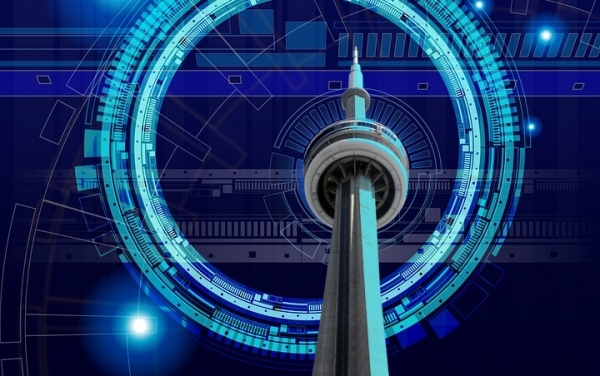Competition for AI and engineering talent has never been more fierce. Last week we noted that DeepMind, the premier UK-based deep learning lab acquired by Google in 2014, posted a job ad for a Research Scientist in Toronto. With labs already in Montreal and Edmonton, it is not surprising that Deepmind is extending its quest for high-calibre niche talent in the city that Geoffrey Hinton, the ‘godfather of AI’, calls home.
But DeepMind is not the only company hunting for research and tech talent in Toronto. Last week, DoorDash announced it would be launching an engineering hub, joining companies like Twitter, Pinterest, Reddit, Wayfair, and Cloudflare that all announced recent plans to build and scale AI and engineering teams in the Greater Toronto Area. Across Canada, more than 45 companies have invested in AI research labs, including Samsung, Facebook, Microsoft, Nvidia, and Alphabet.
Companies are coming in droves to snap up Toronto’s highly-skilled technical talent pool for three reasons: 1) Canada’s friendly immigration policies, 2) its strong academic and research institutions producing top AI researchers, and 3) its relatively lower salaries (including lower cost of health benefits) and discounted exchange rate. In turn, Canadian founders and startups are increasing budget allocations for talent as they grapple with the true cost of building ML and engineering teams.
With a wider set of global companies and successful local startups to choose from in their home ecosystem, along with greater compensation packages, local technical graduates have more reasons than ever to stay in Canada.
Canada’s capacity to absorb this surging demand for deep tech talent reflects the resilience and maturation of Canada’s AI ecosystem. With an increasing number of home-grown unicorns and a surge of capital being recycled into the Canadian tech sector, there has never been a more exciting time for startups in Canada.
AI News This Week
-
Start-ups look to ease pressure on Canada’s healthcare system (Financial Times)
This feature explores the accelerating pace of digital adoption in the healthcare sector and includes a profile of PocketHealth, a digital medical image sharing solution and Radical Ventures portfolio company. The article notes that three months into the pandemic, PocketHealth had tripled its deployments. Its platform is now used by hundreds of North American hospitals and clinics and hundreds of thousands of patients taking control of their health journey.
-
Ash Fontana and The AI-First Company: How to compete and win with AI (Medium)
Our friend Ash Fontana, Managing Director at Zetta Venture Partners, has published a blueprint for building an AI-first company. His five pillars include: understanding how to use machines to compound learning (strategy), how to build AI into the company (tactics), where to focus resources in AI (capital), and how to make sense of the data that comes from AI projects and build on your AI advantages (metrics).
-
2021 Thriving in an AI World survey (KPMG)
AI is becoming ubiquitous and business leaders are more concerned about missing the AI wave than they are about overestimating the technology’s potential. In a survey conducted across seven industries, including nearly 1000 decision-makers, it was clear that the “majority of executives want their organizations to adopt AI faster.”
-
From deepfakes to TikTok filters: How do you label AI content? (First Draft)
“AI isn’t the future of our media ecosystem. It’s the present.” AI is increasingly playing a greater role in both curation and creation of our content. People and organizations want to explain AI’s role to their audiences. Labels may hold the answer. Now is the time to understand the various labelling methods, what they offer, and their limitations.
-
Brain computer interface turns mental handwriting into text on screen (Science Daily)
For the first time, researchers have decoded the neural signals associated with writing letters by using an algorithm that detects and displays typed versions of handwritten letters in real-time. The researchers see their invention helping people with paralysis to communicate.
Radical Reads is edited by Ebin Tomy.

